Does Thread Count on Sheets Matter or Is It Marketing Hype?
You've been lied to about thread count. That 1,000-thread-count sheet set you're eyeing? It might actually feel worse than a quality 300-count option. Here's the kicker: manufacturers discovered they could twist multiple thin, weak yarns together and count each strand separately—technically true, but your skin knows the difference.
We're pulling back the covers on what thread count really means and when it's just expensive marketing fluff. Ready to become the smartest bed sheet shopper in the bedding aisle? Let's strip away the marketing myths and get to what really creates that perfect night's sleep.
What Does Thread Count Mean?
Thread count is simply the number of threads woven into one square inch of fabric—both horizontal (weft) and vertical (warp) threads combined. Picture a tiny one-inch square on your sheet. Count every single thread running through it. That's your thread count. A 300-thread-count sheet has 150 threads running lengthwise and 150 running widthwise per square inch.
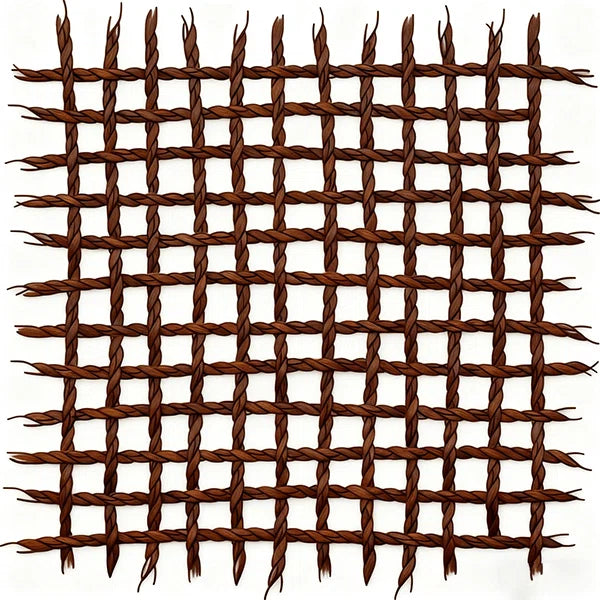
Is Higher Thread Count Better?
Not always. Once you pass 400-500 thread count with single-ply yarns, manufacturers hit a physical limit. You can only pack so many quality threads into a square inch before the fabric becomes stiff and less breathable.
So what do brands do to hit those impressive 1,000+ numbers? They switch to multi-ply yarns, where multiple strands are twisted together. Manufacturers then count each strand individually, inflating the number. For example, a sheet with 400 two-ply threads can be marketed as 800 thread count, even though the fabric quality isn’t actually higher.
Single-Ply vs Multi-Ply Yarn
-
Single-ply means one strong, long-staple cotton fiber spun into thread. These create the softest, most durable bed sheets that get better with each wash. Think of it like a solid rope—simple but strong.
-
Multi-ply yarns twist 2-4 weaker, shorter fibers together. Manufacturers count each strand separately, inflating the thread counts. That "1,200-thread-count" sheet? Probably 300 four-ply threads that'll pill faster than your old college sweatshirt.

Comparison Chart
| Yarn Type | Construction | True Quality | What Happens Over Time | Red Flags |
| Single-Ply | One long-staple fiber spun into thread | Strong, smooth, breathable | Gets softer with each wash | Usually 200-500 count |
| 2-Ply | Two shorter fibers twisted together | Decent, but less durable | Pills after 6-12 months | 600-800 count claims |
| 3-Ply | Three weak fibers twisted | Heavy, less breathable | Pills within 3-6 months | 900-1,200 count claims |
| 4-Ply | Four thin fibers twisted | Thick, traps heat | Pills almost immediately | 1,200+ count claims |
The Math Trick Exposed:
-
Single-ply 400-count = 400 quality threads per square inch
-
4-ply "1,600-count" = 400 twisted bundles × 4 strands = same density, worse quality
Pro tip: If the package boasts anything over 600-count without specifically saying "single-ply," you're probably looking at multi-ply math.
When You Should Pay Attention to Thread Count
Thread count matters most when you're comparing identical fabric types and weaves. For genuine single-ply 100% cotton sheets, such as percale cotton, sateen sheets, the thread counts can become your quality compass:
-
200-count often feels rough and thin
-
300-500 count percale hits the sweet spot for softness, breathability, and durability.
-
500+ might indicate multi-ply tricks
That said, thread count alone is never a guarantee of quality—it’s just one piece of the puzzle. It only makes sense to use it as a reference within the same fabric category. Comparing bamboo to cotton using thread count? That's like judging a fish by its climbing ability—totally different metrics apply.
When You Should Ignore Thread Count
Thread count becomes meaningless when brands use multi-ply yarns to boost the number, or when comparing different fabrics (like linen, silk, bamboo, or microfiber), where breathability and fiber quality matter more than the number itself. Here's when to completely forget the numbers and what to look for instead.
Linen Sheets
Linen sheets often have a low thread count, typically 80–150, but don’t be fooled—thread count doesn’t capture linen’s quality. Its threads are thicker and uneven, so a high thread count is nearly impossible and unnecessary. Linen is made from thick, hollow flax fibers, giving it natural strength, breathability, and a unique texture that improves with each wash.

Source: https://www.hawthornintl.com/fabric-guide
Instead of thread counts, focus on the weight—175–200 GSM is ideal for year-round use—and the origin of the flax. Belgian and French flax are considered the gold standard, producing the softest, most durable linen.
High-quality linen bed sheets are breathable, moisture-wicking, and naturally long-lasting, making them a smart, comfortable choice despite what the thread count says.
Silk Sheets
Silk offers natural temperature regulation, keeping you cool in summer and warm in winter. It’s hypoallergenic, moisture-wicking, and has a beautiful, lustrous sheen that improves with care.

Source: https://www.hawthornintl.com/fabric-guide
Thread count isn’t a reliable measure for silk sheets. Unlike cotton, silk is naturally thin and delicate, so a higher thread count doesn’t mean better quality. What matters most is the momme weight, which shows the fabric’s density and durability—a higher momme usually means a silk sheet is more resilient and long-lasting.
Silk type is also important. Mulberry silk is the highest quality, featuring long, smooth fibers that feel soft and luxurious. Other types, like Tussah or wild silk, are coarser and less uniform.
Bamboo Sheets
When choosing bamboo sheets, thread count isn’t the key indicator of quality. Instead, focus on the type of bamboo fabric and how it’s processed. Look for the sheet labeled “100% bamboo viscose” or “bamboo lyocell,” as these indicate smooth, durable fibers. High-quality processing produces a soft, silky feel without relying on high thread counts.

Source: https://italianartisan.com/what-is-bamboo-fabric-origin-composition-and-properties/
Bamboo sheets also offer natural benefits: they are naturally antibacterial, highly moisture-wicking—up to 3x more than cotton, and hypoallergenic, making them gentle on sensitive skin. Choosing the right bamboo fabric and processing method ensures comfort, durability, and a cool, breathable sleep experience.
Flannel Sheets
For flannel sheets, fabric weight matters more than thread count, as it indicates thickness, warmth, and durability. Heavier flannel provides extra insulation and a cozier feel, while lighter flannel is more breathable and easier to maintain.

Most flannel sheets are made from cotton, wool, or synthetic blends and are brushed for a soft, fuzzy texture. Look for dense, evenly brushed fibers to ensure lasting softness. Flannel sheets are perfect for colder climates, offering natural warmth and comfort that withstands repeated washes.
Also made of flannel, Homlyns flannel heated throws feature 5 heat levels, a 3-hour auto-off timer, and come in colors like purple, coffee, grey, and navy—offering safe, soft, and stylish warmth for cozy relaxation.
Tencel/Lyocell Sheets:
Eco-friendly Tencel and Lyocell fibers are naturally smooth, strong, and breathable, so thread count isn’t a reliable measure. Instead, focus on fabric weight and finishing, which affect the softness, durability, and drape of the sheet. These fibers provide a cool, silky feel that lasts over time.

Source: https://aligntex.com/tencel/
Tencel and Lyocell sheets are moisture-wicking, temperature-regulating, and eco-friendly, made from sustainably sourced wood pulp. With proper care, they resist pilling, maintain softness, and offer long-lasting comfort and durability.
Microfiber Sheets
Microfiber is made from ultra-fine synthetic fibers. Its softness and durability depend on fiber density and weave, not inflated thread count numbers.

Here are the warning signs of meaningless thread counts:
-
Claims of 1,500+ thread count
-
Suspiciously low prices for "high" counts
-
Feels slippery, not soft
-
Creates static in winter
-
Traps heat like plastic wrap
Microfiber can hit 1,800+ threads per inch because the fibers are thinner than silk. But thin polyester is still polyester. You'll wake up sweaty regardless of the impressive number.
Knit vs. Woven: Why Jersey Doesn't Count
Thread count only applies to woven fabrics, where threads run horizontally and vertically (warp and weft) and can be counted per square inch. Jersey, on the other hand, is a knit fabric, not woven. It’s made by looping yarns together (like in a T-shirt), which gives it its signature stretch, softness, and breathability. Any "thread count" on jersey packaging is pure fiction.

Source: https://www.hawthornintl.com/fabric-guide

Woven vs. Knit
Grounding Bed Sheets
Grounding sheets play by different rules. Most cotton grounding sheets are made with around 200–300 thread count cotton. This gives a balance of softness, durability, and breathability.

Why Not Higher? Unlike luxury cotton sheets that may reach 300–500 thread count, grounding sheets prioritize conductivity. A higher thread count can reduce airflow and interfere with the silver fibers’ contact with your skin.
Take Homlyns' grounding sheets—they blend 95% cotton with 5% pure silver fiber for conductivity. The cotton takes a backseat to the silver content and connection quality.

You're buying these for the earth connection and potential health benefits, not thread density. That silver fiber needs space to work its magic, so ultra-high thread counts would actually reduce effectiveness. Check out the comprehensive guide on How to Choose Grounding Sheets!
Quick Reference: When Thread Count Matters vs. Doesn't
Pay attention to thread count:
-
✓ 100% cotton (percale, sateen)
-
✓ Single-ply yarns
Completely ignore thread count:
-
✗ Linen (check GSM and flax origin instead)
-
✗ Silk (check momme weight and silk type)
-
✗ Bamboo (check fabric and processing)
-
✗ Flannel (check fabric weight)
-
✗ Tencel/Lyocell (check weight & finishing)
-
✗ Microfiber (check fiber density and weave)
-
✗ Woven (Can't be measured by thread count)
-
✗ Grounding sheets (check silver percentage)
Speaking of grounding sheets, our Homlyns grounding sheets contain 5% pure silver fiber—a spec that matters infinitely more than thread count for conductivity. You're buying earth connection, not thread density.
What Really Matters When Buying Bed Sheets
Let's get straight to what actually matters. This sheet buying guide cuts through the marketing hype to help you focus on the factors that truly impact comfort, durability, and sleep quality.

Fabric Quality
Common Bedding Materials:
-
Cotton: Soft, breathable, and durable, ideal for everyday use.
-
Linen: Lightweight and airy, with a naturally textured feel.
-
Silk: Smooth and luxurious, gentle on skin and hair.
-
Bamboo: Eco-friendly, moisture-wicking, and naturally soft.
-
Tencel/Lyocell: Silky, breathable, and highly sustainable.
-
Flannel: Warm and cozy, perfect for cold nights.
-
Microfiber: Lightweight, soft, and easy to care for.
For Cotton: The fiber length (staple) trumps thread count every time. Long-staple cotton (1.25+ inches) creates stronger, softer threads than short-staple cotton packed at double the density. Egyptian and Pima cotton earn their reputation through fiber quality, not inflated numbers. Look for terms like "combed cotton" (short fibers removed) or "single-ply long-staple"—these indicate actual quality, not marketing math.
Weave and Feel
Your preferred texture determines everything:
-
Percale: One-over-one weave creates that crisp, hotel sheet feel
-
Sateen: Four-over-one weave delivers silky smoothness
-
Twill: Diagonal weave adds durability and subtle texture
-
Jersey: Knit construction for t-shirt softness
Each weave has an optimal thread count range. Fighting against these natural limits creates inferior sheets, regardless of the number on the package.
Finishing Processes
Quality manufacturers pre-wash bed sheets to prevent shrinkage and enhance softness. Chemical treatments for wrinkle resistance might sound convenient, but they can trap heat and feel synthetic.
Our heated mattress pads work best with breathable, naturally finished sheets that allow heat to transfer evenly. Skip the heavy chemical treatments—your skin (and heating products) will thank you. More details on how to use heated mattress pads here!
Durability and Longevity
Want sheets that last? Check the warranty and return policy first. Homlyns offers 30-day returns because we know quality proves itself quickly.
Signs of durable sheets:
-
Reinforced edges that won't fray
-
Colorfast dyes that survive hot washes
-
Single-ply construction that resists pilling
-
Deep pocket corners that stay put (especially important with heated mattress pads underneath)
Multi-ply, high-thread-count sheets often pill within months. Those little fabric balls are literally the cheap fibers breaking apart.
Comfort and Lifestyle Fit
Your sheet should match your life, not magazine photos:
-
Hot sleepers: Percale cotton or linen (200-400 count)
-
Cold sleepers: Sateen or flannel, or pair percale with our heated bedding
-
Sensitive skin: Organic cotton or bamboo without chemical finishes
-
Pet owners: Tightly woven percale (300-400) resists snags
-
Wash-and-go lifestyle: Percale or jersey that looks good slightly wrinkled
Thread count can't tell you if sheets will trap your body heat or if they'll survive your cat's midnight zoomies. Focus on what actually affects your sleep quality.
Ready to Sleep Better Tonight With Homlyns?
Thread count is just one piece of the comfort puzzle—and often the most misleading one. Now you know what those numbers really mean, when they matter, and when they're pure marketing fluff. Focus on single-ply construction, appropriate ranges for your preferred weave, and fabric quality over inflated numbers.
Key takeaways:
-
300-500 thread count in single-ply 100% cotton sheet is the sweet spot
-
Multi-ply yarns inflate numbers but reduce quality
-
Different fabrics (linen, silk, bamboo sheets) make thread count irrelevant
-
Focus on fiber quality, weave, and finishing instead
While sheets with high thread count may sound luxurious, true comfort comes from quality fibers, proper weave, and smart design. And while you're choosing sheets based on real quality markers, consider what goes underneath them. Our heated mattress pads and grounding sheets deliver comfort that no thread count can match—personalized temperature control and earth connection that transform your sleep experience. Pair them with quality 400-count sheets, and you've got the setup thread-count chasers only dream about.




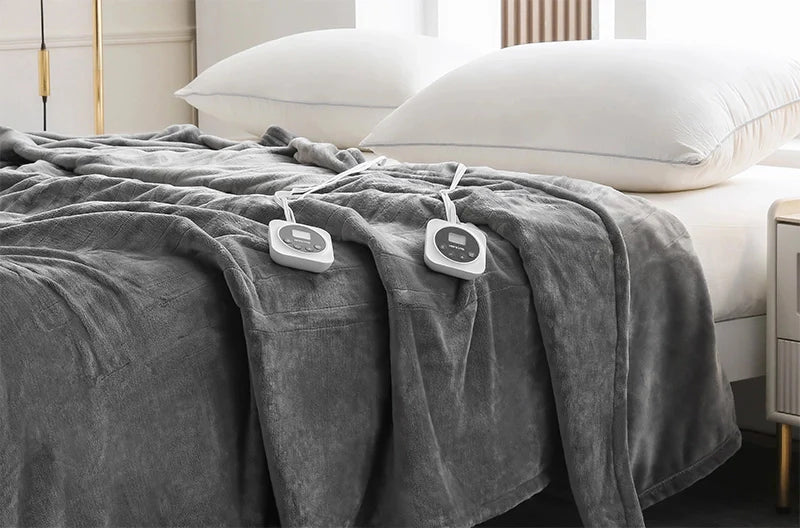
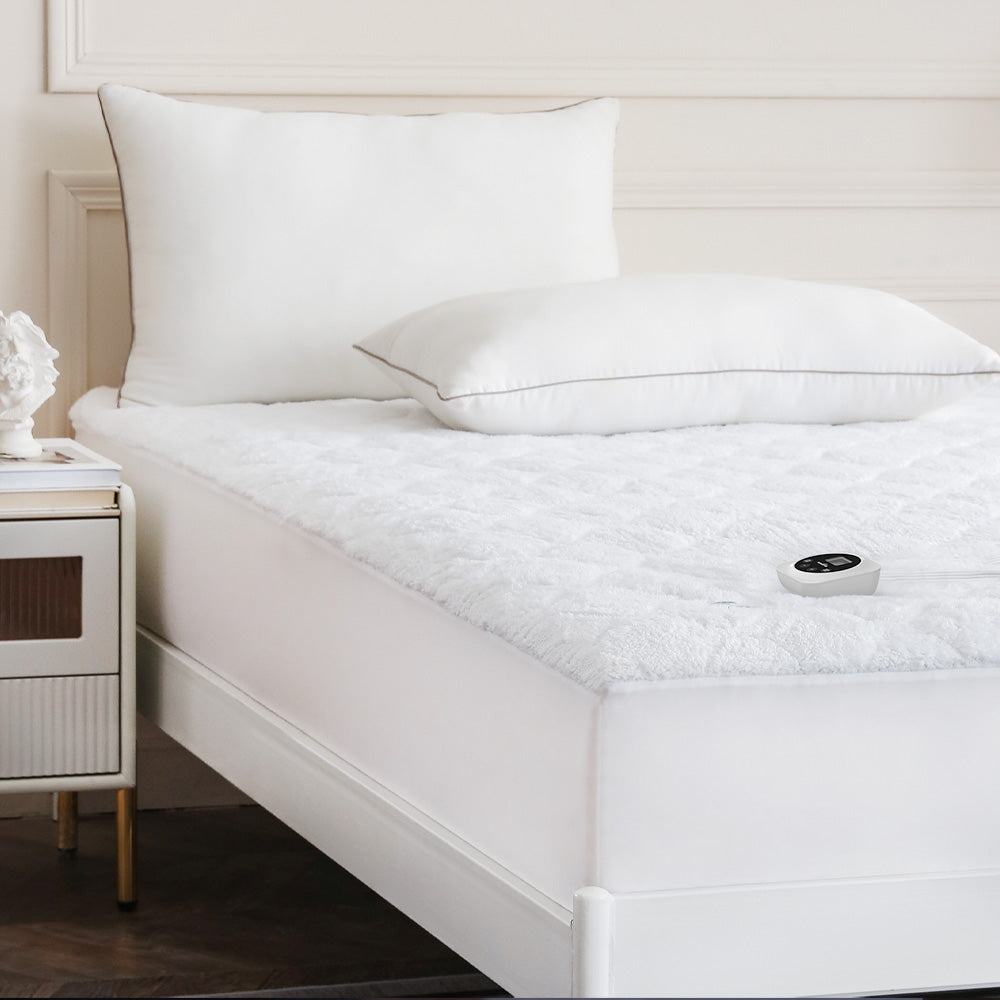
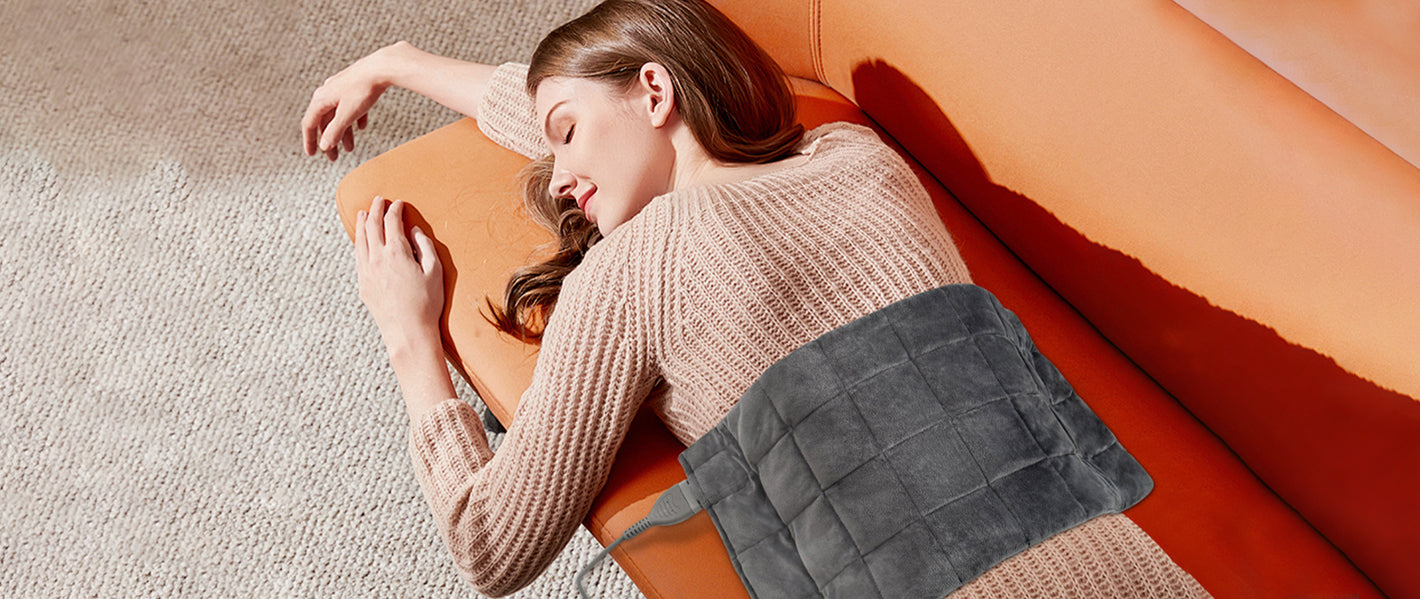
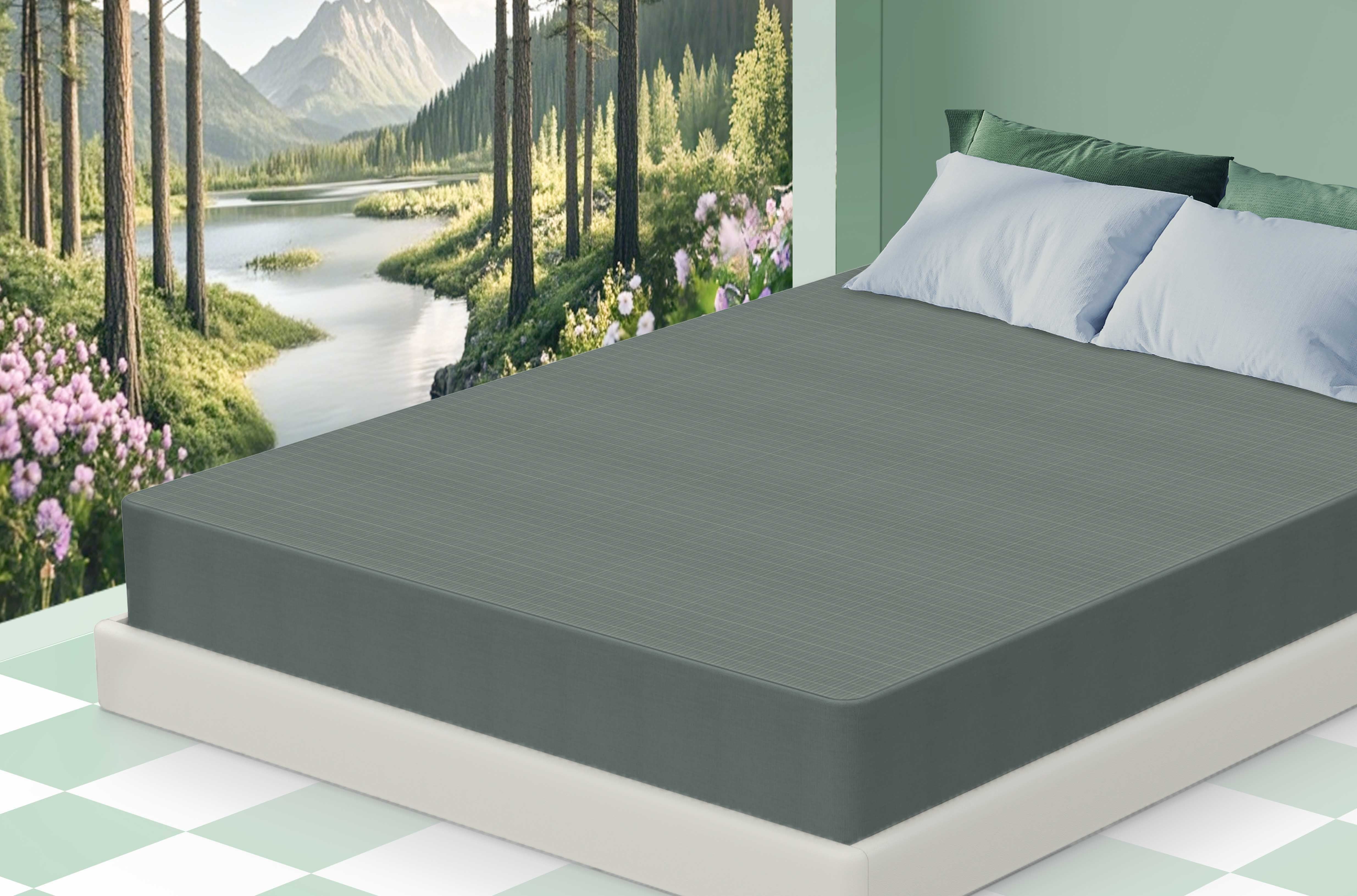
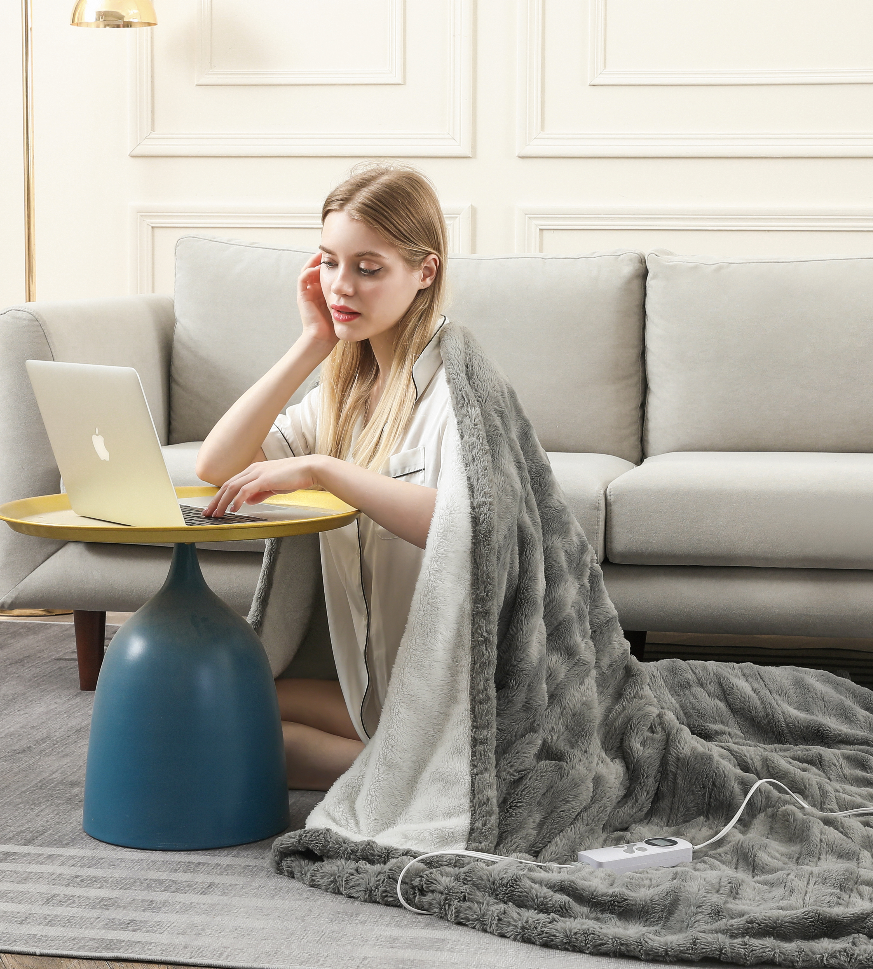
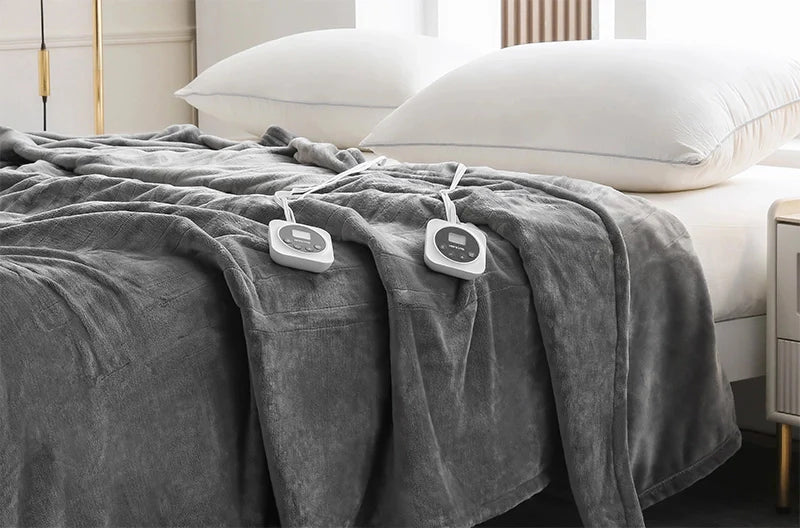
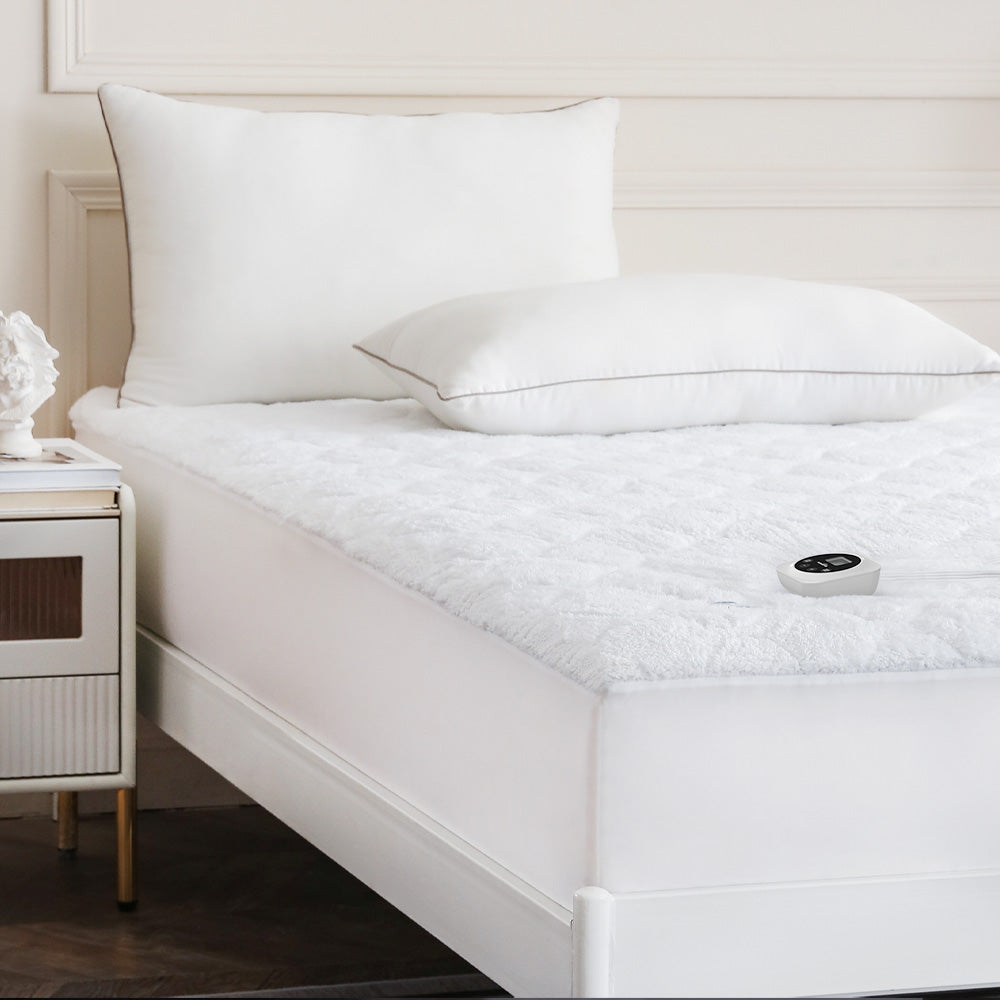
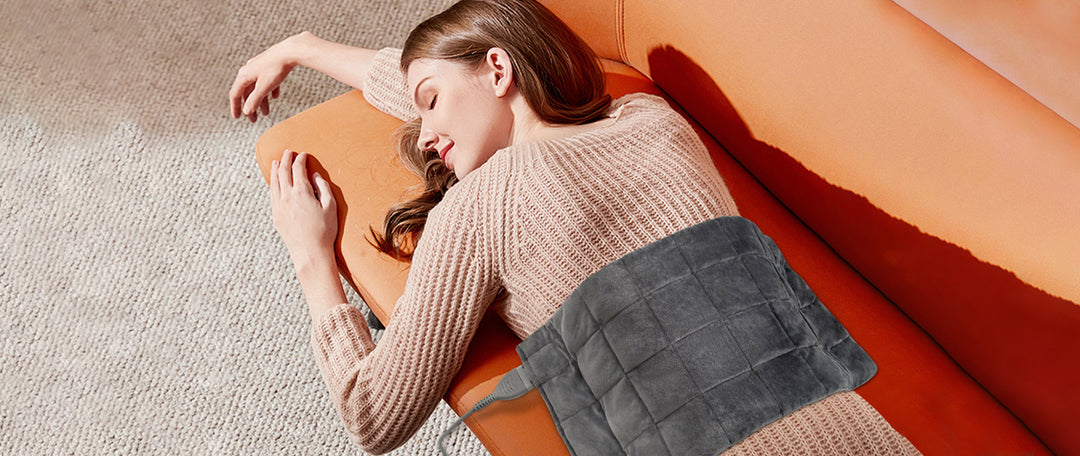
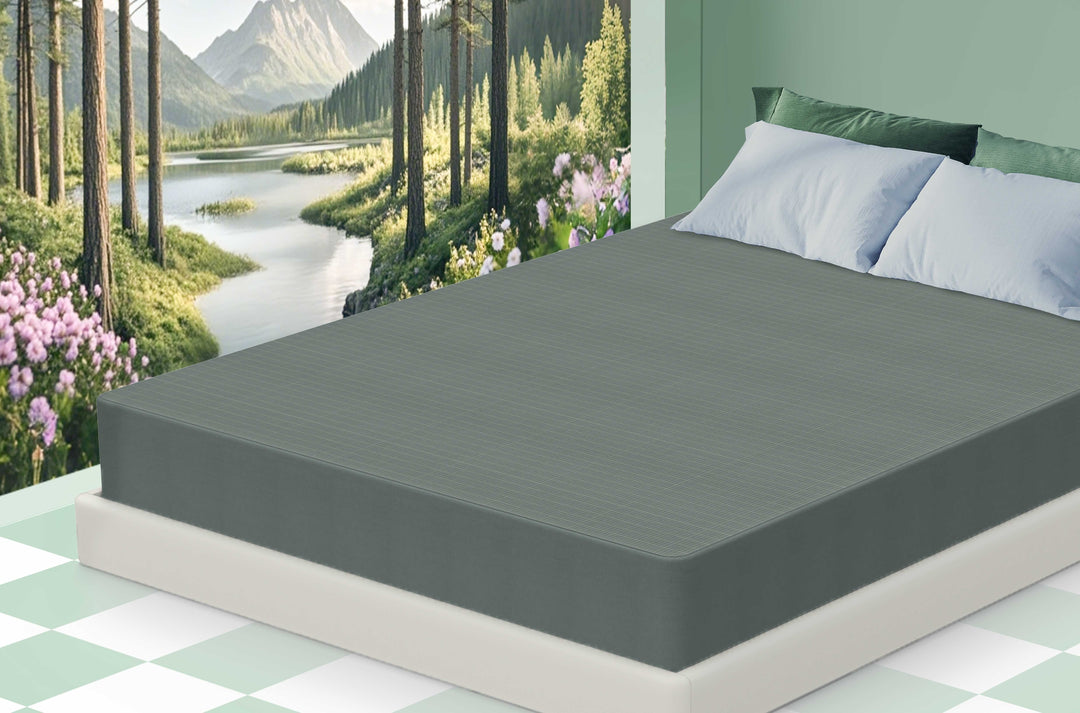



Leave a comment